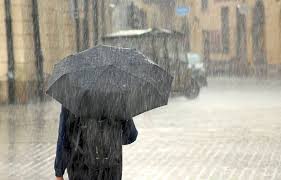Monsoon
Facts
 A Monsoon, which is a large sea breeze, occurs when the wind blows from the cooler ocean to the much warmer landmass. This seasonal weather pattern is a result of changes in the circulation of the atmosphere and the rain resulting from the warming of both the sea and the land.
A Monsoon, which is a large sea breeze, occurs when the wind blows from the cooler ocean to the much warmer landmass. This seasonal weather pattern is a result of changes in the circulation of the atmosphere and the rain resulting from the warming of both the sea and the land.
Monsoon does not mean rain, even though many people believe this is what it means. A monsoon is a seasonal change in the direction of the prevailing wind. It is simply a strong breeze that blows from cold to hot environments.
- The word Monsoon is believed to be derived from the Arabic word 'Mausim'. Mausim means a shift in wind or season.
- It is estimated that there are approximately 500,000 lightning strikes during a monsoon.
- In several parts of the world, life depends on the monsoon rain. When the monsoon doesn't occur in these places, it can result in extensive famine and death of both humans and animals.
- Monsoon storms can range from violent thunderstorms to only small dust storms.
- India Often experiences the most dramatic monsoon int he worlds. 2005 monsoon was very strong that over 1,100 lives were lost!
- A monsoon always blows from a cold region to a warm region.
- Monsoon season officially ends on September 30th each year.
- In Europe, they typically refer to the monsoon system as the 'Return of the Westerlies'.
- In the United States, Southwest Texas, New Mexico and Arizona are all parts of a monsoon season from June 15th to September 30th each year.
- In Arizona, during the monsoon, it is not uncommon to see a wall of dust that reaches hundreds of feet in the air.





0 Comments